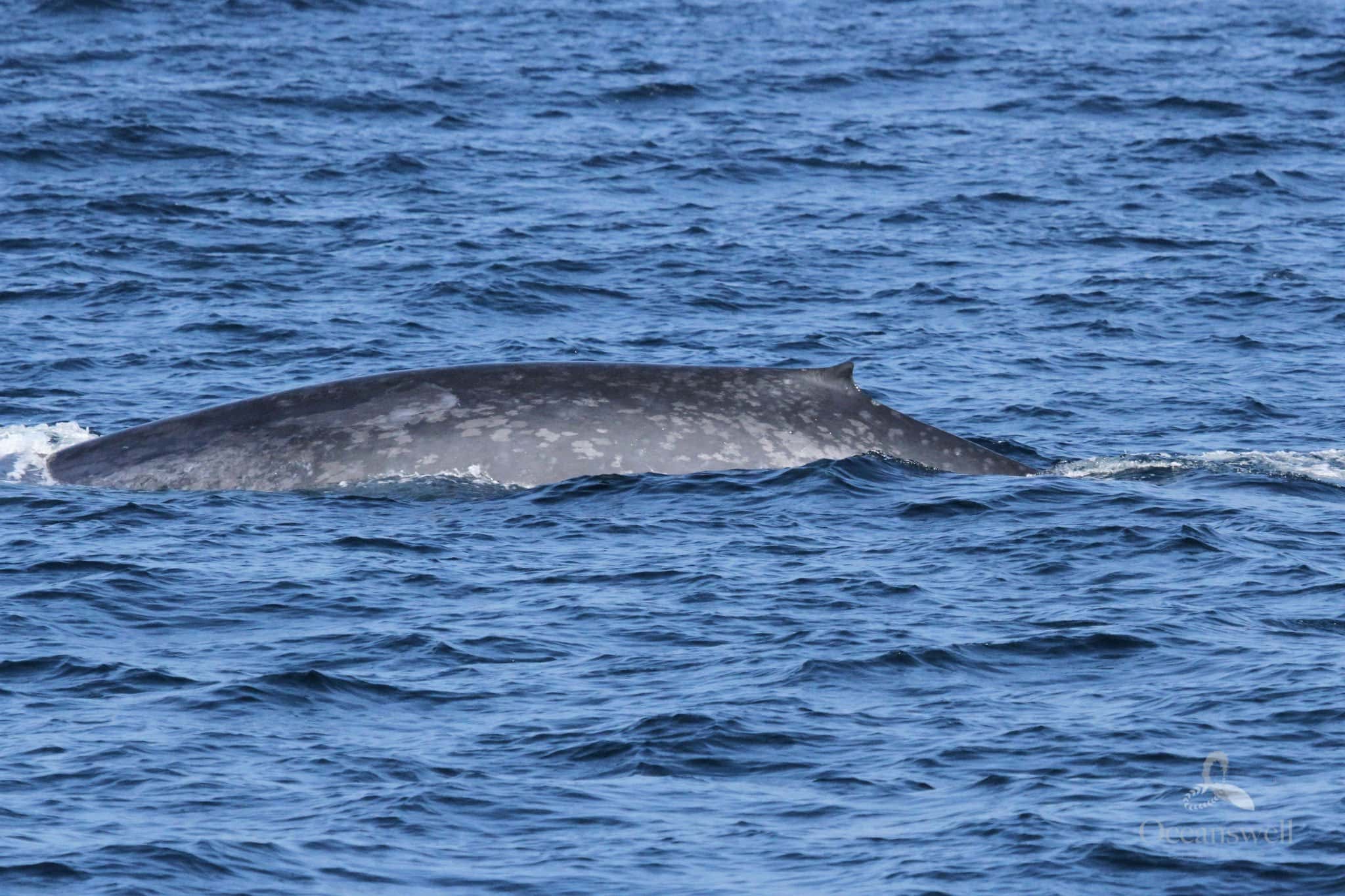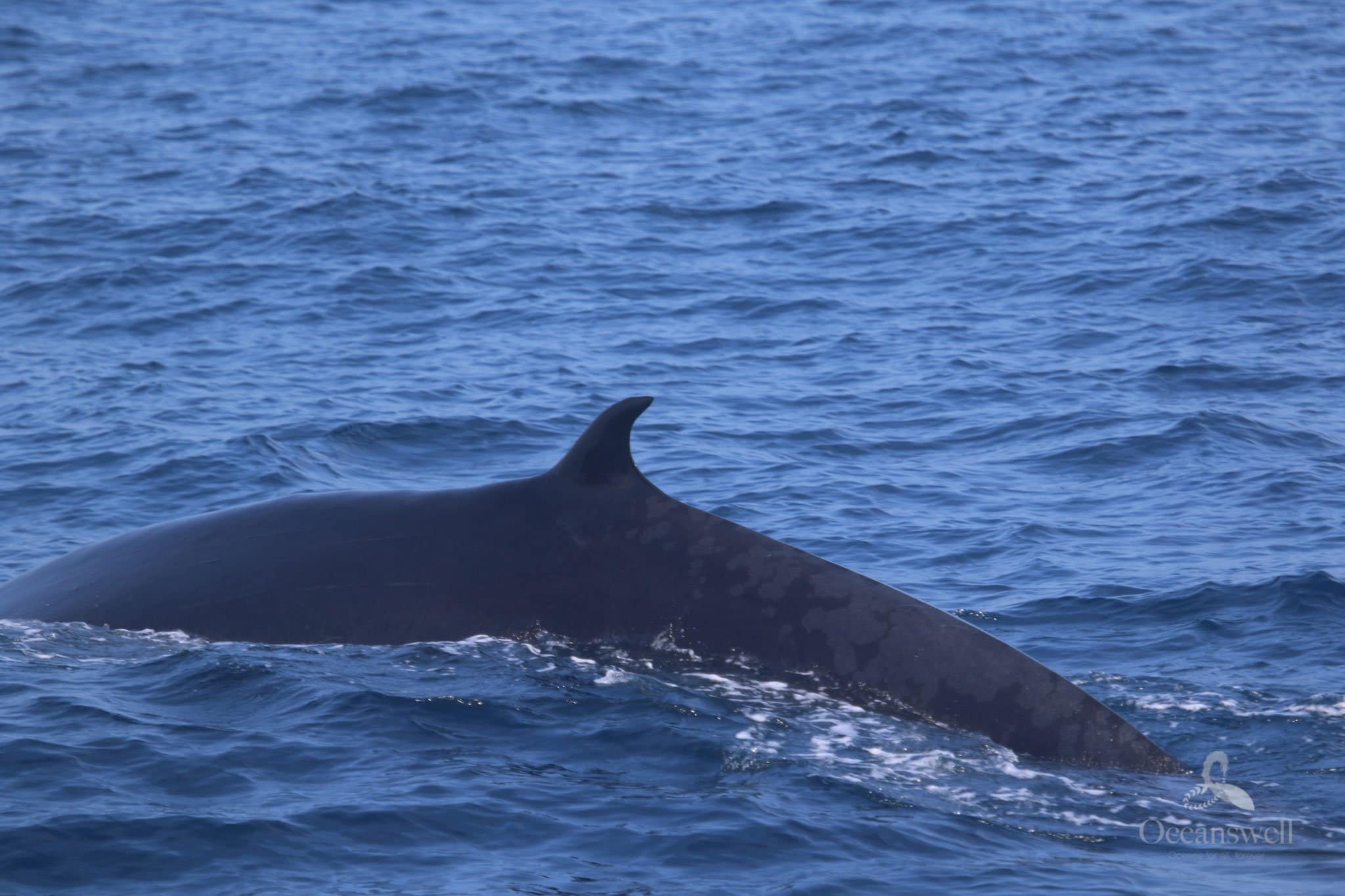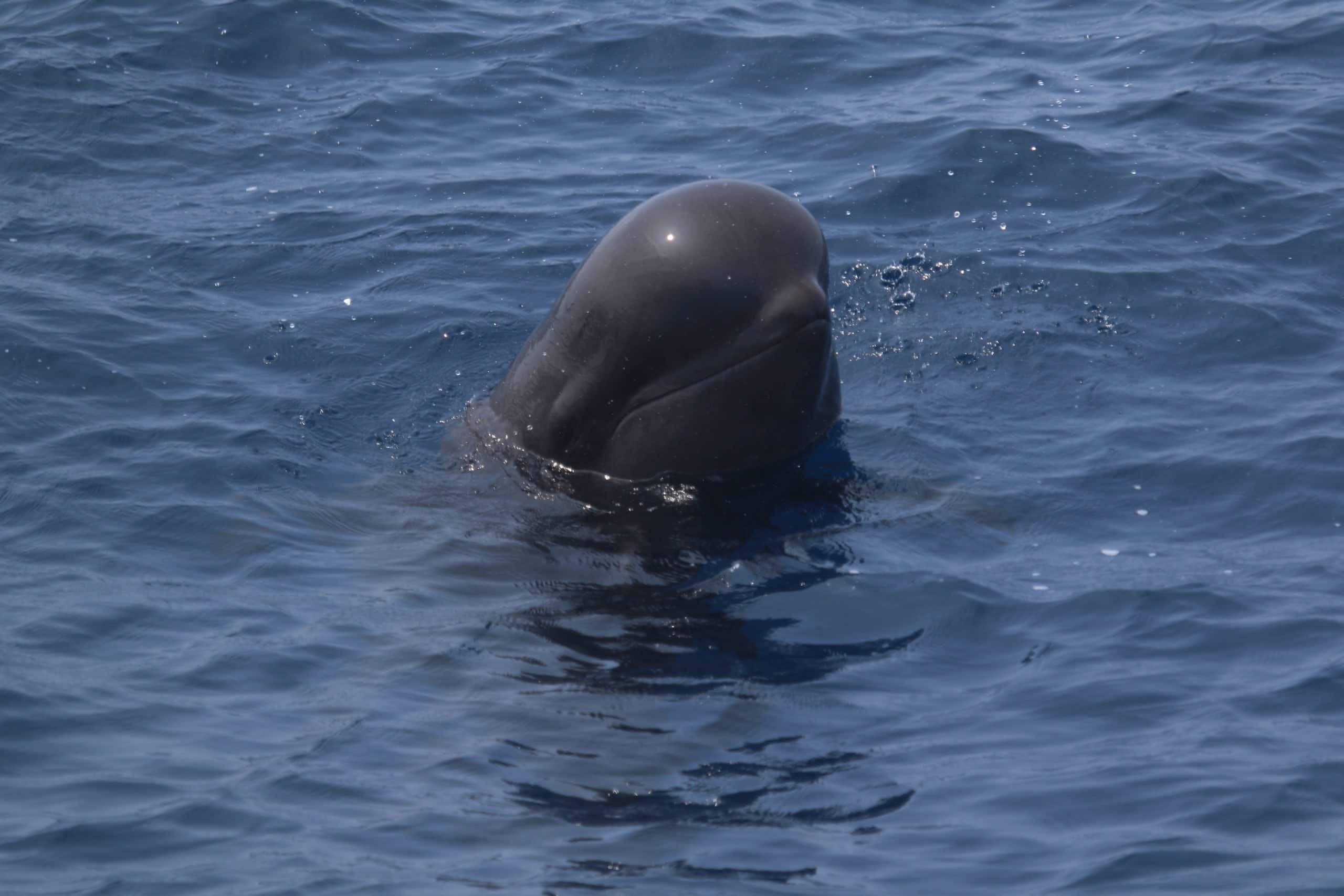Written by Ayani Nagahawatte
What we saw
Even though our main focus was blue whales, we observed other marine mammal species as well! On our very first day in the ocean, we observed two pods of pilot whales. I had never seen a blue whale or a pilot whale before, so it was a great day with amazing sightings.
Name
Blue whale
Fun fact
Their mottled blue-grey colour appears light blue under water—hence their name, the blue whale!
Description
Blue whales are the largest known animals on earth. They are baleen whales. They live all across the world except in the Arctic. Their main food source is known to be krill, but the Sri Lankan population feeds mainly on shrimp.
What makes it easier for us to spot them at a distance is how they breathe out, making a huge splash above their blowholes. An expert can even identify the species by looking at the shape of the whale’s blow. Of the two baleen whale species we observed, blue whales tend to have a bigger blow and Bryde’s whales tend to have a taller and slimmer blow. Also, from what I observed, blue whales in Sri Lankan waters tend to fluke when diving, while Bryde’s whales usually do not.
Name
Bryde’s whale
Fun fact
We can identify Bryde’s whales apart from similar whale species using the three long ridges on the top of their head.
Description
Bryde’s whales are also baleen whales. They are tropical whales and hence not seen in cooler waters. They are typically found alone or in groups of no more than three.They are smokey blue-grey colour with long slender bodies.
Out of all these amazing encounters, my favourite was the Bryde’s whale mother and calf pair. Both of them diving together was truly incredible to witness. At one point the calf swam right under our boat while turning upside down exposing its belly.
Name
Short-finned Pilot whales
Fun fact
The name “Pilot whale” originated with an early theory that pods were piloted by a leader.
Description
Pilot whales are slightly larger than bottlenose dolphins and do not have beaks. Their gender can be identified by the shape and size of their dorsal fins. Males have bigger and broader dorsals compared to females while the head of a male pilot whale is more square-shaped than that of a female. They are found in pods.
We observed two pods which we estimated to be of 15 and 45 individuals respectively. There were also a few adorable calves. This is good news because it means they are breeding. We also observed their spy-hopping behaviour where they poke their heads out of the surface to see what’s going on around them
Name
Spinner dolphin
Fun fact
They can spin! Many dolphin species do spin, but these species are experts at it, which is how they got their names. They come out of the water headfirst and twist their body as it rises to the air. After reaching the maximum height they would descend back into the water landing on their sides. They can do two to seven spins in one leap. Experts suggest that they use their spinning behaviour for acoustic signalling or communication and to remove ectoparasites such as remoras.
Description
They are usually found in big pods that could range in size from fewer than fifty to thousands. Their most distinctive characteristics are the elongated rostrum and the tripartite colour pattern. The dorsal area is dark grey, the sides light grey, and the underside pale grey or white.
We observed pink undersides, especially in calves, caused by the increased blood flow to the skin surface as their body heat increases. Another interesting fact I noticed was that the spinner dolphin had a close relationship with fishing boats! Fishermen follow the dolphins to locate a good fishing spot and spinners follow the fishing boats for easy prey. It’s mutually beneficial for both parties. The calves trying to spin were truly a sight to remember. We also observed them porpoising.
Name
Pantropical spotted dolphin
Fun fact
They have spots! They are born unspotted and get spots as they age.
Description
The snout is long and narrow with a white tip, and white lips. They are dark grey on top with light spots and lighter grey on the belly and sides with dark spots. Adults are spottier than calves.
Bottlenose dolphins were found in small pods of around 5 individuals. They looked bulkier compared to Spinner dolphins and have shorter beaks. I am grateful for being able to observe this many species in such a short time. Studying their behaviour made me realise that there’s always a reason behind the way they act, and that if we’re curious enough there will always be something new to learn!
References:
Blue Whale, facts and photos. Animals. (n.d.). Retrieved May 4, 2022, from https://www.nationalgeographic.com/animals/mammals/facts/blue-whale
Rorqual de Bryde. Whale Watching Handbook. (2022, May 3). Retrieved May 4, 2022, from https://wwhandbook.iwc.int/en/species/brydes-whale
Wikimedia Foundation. (2022, March 7). Spinner dolphin. Wikipedia. Retrieved May 4, 2022, from https://en.wikipedia.org/wiki/Spinner_dolphin#Spinning_behavior







